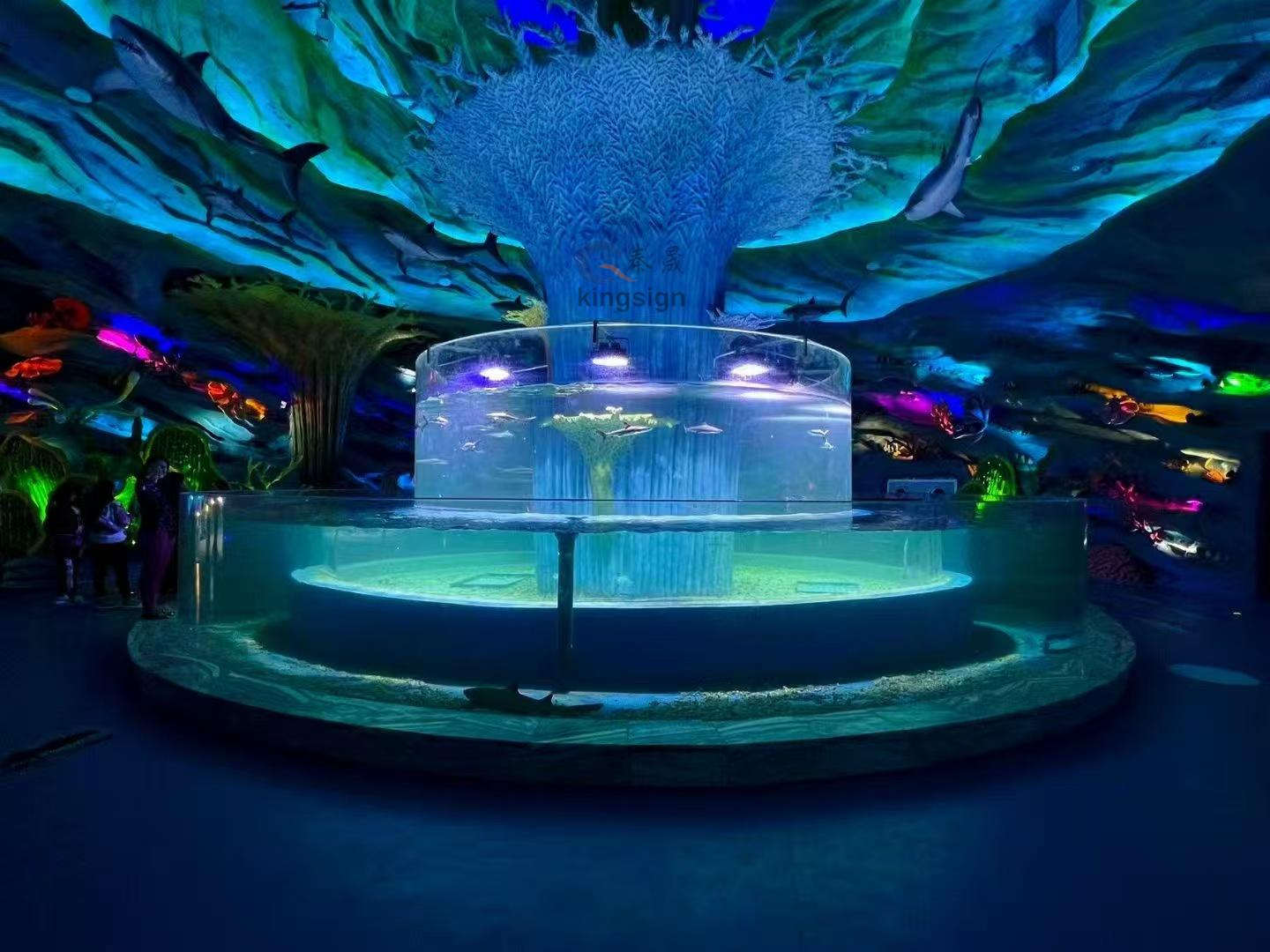Acrylic sheet has significant advantages in the application of large aquarium observation windows, making it the preferred material in this field, especially in scenarios that require oversized, high strength and excellent optical performance. Its main advantages include:
1. Excellent optical clarity and light transmittance:
Acrylic has extremely high light transmittance (usually over 92%), even better than ordinary glass.
It provides excellent visual clarity, true color reproduction, and almost no color difference, bringing visitors an unparalleled immersive viewing experience.
It can maintain excellent transparency even after long-term immersion in water, and is not easy to yellow or fog (high-quality, UV-resistant acrylic).
2. Extremely high strength and impact resistance:
This is one of the core advantages of acrylic in large aquarium windows. The impact strength of acrylic is more than 10 to 20 times that of glass of the same thickness.
For large observation windows that are subject to huge water pressure (especially at great depths), acrylic can provide a higher safety factor. Even if a break occurs (which is extremely unlikely), it tends to produce large blunt-edged fragments or only cracks, rather than instantly shattering into dangerous fragments like glass, greatly reducing the risk of injuring visitors or creatures.
The excellent toughness enables it to better withstand water pressure fluctuations, earthquakes (considered in the design) or accidental impacts.
3. Excellent processing performance and plasticity:
Acrylic can be made into various complex curved surfaces, arc surfaces and even spherical shapes (such as tunnels) through thermoforming. This provides aquarium designers with great creative freedom, and they can design visually impactful observation window structures such as cylinders, arches, and waves, providing a viewing experience without visual blind spots.
This is difficult for glass to achieve, as it is difficult for glass to achieve large-scale complex curved surfaces.
4. Large size and integration:
Acrylic sheets can be cast into extremely large single sheets (thickness can reach more than 600mm, single sheet area can reach hundreds of square meters). This makes it possible to build seamless giant observation windows. Large single-piece structures eliminate the visual obstacles (joints) and potential structural weaknesses (risk of sealing failure) of glass spliced observation windows, creating a stunning, unobstructed viewing field. The world record-breaking large aquarium windows are almost all made of acrylic.
5. Relatively light weight:
The density of acrylic (about 1.18 g/cm³) is about half that of glass (about 2.5 g/cm³).
For observation windows of the same thickness and size, acrylic is much lighter than glass. This greatly reduces the load requirements of the supporting structure, simplifies the building structure design, and reduces the difficulty and cost of transportation, hoisting and installation.
6. Good sealing:
Large acrylic viewing windows are usually precisely machined and sealed with special elastic gaskets between the concrete or steel structure frame. Acrylic itself has good compatibility with high-quality sealing materials, and can achieve reliable and long-lasting waterproof sealing.
7. Weather and Chemical Resistance:
High-quality acrylic has excellent UV resistance (UV stabilizers added) and can resist UV rays from sunlight (if exposed) or aquarium lights for a long time, preventing aging, yellowing and embrittlement.
It has good tolerance to seawater, freshwater and common chemicals in aquarium environments (such as disinfectants, salt).
8. Relatively easy to maintain:
Although the surface is not as hard as glass (more easily scratched), minor scratches can usually be repaired by polishing (requires professional operation).
The cleaning method is similar to glass, but you need to use a soft cloth and the recommended neutral detergent, and avoid using strong solvents or rough tools.
In summary, the core advantages of acrylic sheets in the application of large aquarium windows are as following:
Unparalleled large size and integrated design capabilities (creating stunning seamless views).
Extremely high impact resistance and safety (especially for structures that withstand huge water pressure).
Excellent optical clarity (providing the best viewing effect).
Excellent plasticity and design freedom (realizing complex curved surface shapes).
Relatively light (reducing structural burden and facilitating installation).
Although its initial material cost and professional processing fees may be higher, acrylic is almost the best choice for large and extra-large aquarium projects that pursue the ultimate viewing experience, safety and iconic architectural effects.



